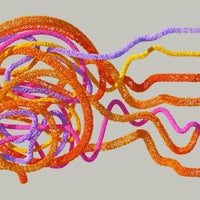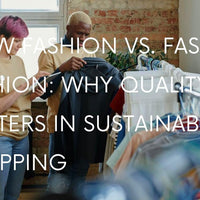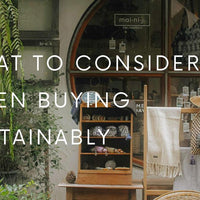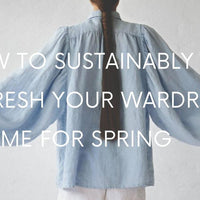Table of Contents
- Where does linen come from?
- How is linen harvested?
- How is linen produced?
- Linen Clothing
- Is linen sustainable?
- Does linen shrink when washed?
- How to wash linen clothes
- Storing Your Linen Clothing: Tips to Keep Them Fresh and Crisp
- Benefits of wearing linen clothing
- The History of Linen
- Should you buy linen clothing?
- What are some linen clothing brands and where can I buy them?
Linen clothes in Australia are super popular. It is the favourite textile of many people because it’s very comfortable and highly absorbent, which makes it a fresh, optimal choice to wear in hot weather.
Linen is also resistant and dries faster than cotton, which makes linen clothes the perfect choice for those who are looking for sustainable clothing in Australia.
Even though linen is very popular, most people don’t know how the production process works or even where it comes from. If you would like to learn more about linen, here are the most common questions answered for you.
Where does linen come from?
Linen is a natural textile derived from the fibres of the flax plant. Yes, the same one that produces those highly nutritious flax seeds!
These beautiful blue flowers thrive in temperate climates and rich soils. Thus, the highest quality linen comes from Europe, especially from Belgium.
The flax fibres are very strong, which gives linen its high resistance and allows the production of clothing in a variety of different textures. As linen fibres are thicker than cotton fibres, a lower thread count is necessary to guarantee high quality, enduring linen fabric and contributing to its sustainability.
Linen fabrics often feel more crisp initially, and become soft and supple to the touch through time and use.
Linen is one of the oldest textiles used in the world. It is said that European peoples were using woven linen fabrics dating back over 30,000 years! In ancient Egypt, they used linen for mummification and for burial shrouds.
Linen uses fewer resources and water compared to cotton and manufactured materials.
It can be grown organically using ancient techniques and preserves the environment.
The material is strong, making it last a lifetime and it is naturally biodegradable.
How is linen harvested?
From harvesting the flax plants to obtaining the end fabric, there is a long and laborious process, which is why linen tends to be more expensive than cotton.
Besides where the flax plants come from and its growing conditions, the quality of the finished linen product also depends on the harvesting techniques.
Flax is hand-harvested in order to generate the longest possible fibres. This is achieved either by pulling up the entire plant or cutting the stalks close to the root.
How is linen produced?
After harvesting, the flax plants are dried. Then, the seeds are removed mechanically, in a process called “rippling” (threshing) and winnowing.
The next step is to loosen the fibres from the stalk through retting - a process which uses bacteria to decompose the pectin that binds the fibres together. Retting can be done either naturally or chemically. Natural retting methods take place in tanks, pools or directly in the fields.
Chemical retting methods are a lot faster but are harmful to the environment, so if you are looking for linen ethical clothes, ensure that the manufacturers use natural retting, producing organic linen.
At Velvety, we make sure that all the brands we work with use natural linen production methods that are eco-friendly.
After retting, the manufacturers remove the woody portion of the stalks by crushing them between two metal rollers, in a process called scutching. The parts of the stalk are separated and the fibres are removed. The linseed, shives and tow are set aside for other uses.
Next, the fibres are heckled, using heckling combs to remove the short fibres. Only the strong, long fibres are kept, which will be spun into yarns and woven or knit into linen textiles.
Linen Clothing
The finished linen textiles can be bleached, dyed, printed on, or finished with a variety of treatments or coatings. The textile is turned into the clothing pieces we love: from t-shirts and dresses to bed sheets and covers.
Our favourite are linen dresses: a comfortable, fresh, smooth option to make you rock in hot weather, or combine with warmer pieces for a unique style in winter. With Velvety, you can buy sustainable linen dresses in Australia, including our marvellous linen wrap dresses.
Now that you know all about the manufacture of linen, you should know how to take good care of your linen clothing to make it last forever!
Is linen sustainable?
Now that we know how cool linen is, the next question is: is it sustainable and ethical?

Does linen shrink when washed?
If you follow the instructions above, you won’t stretch or shrink your linens. If you do experience damage during wash, it may be related to the quality of the fabric or chemicals involved if it’s not organic linen.
You should make sure you use soft, not too hot water. Linen does not stretch or elongate and keeps the clothing in good conditions even after routine washes, hanging and ironing.

How to wash linen clothes
Linen clothing can be both hand washed and machine washed. To machine wash linen, separate colours and use lukewarm water (<40°C/104°F). Use the gentle machine cycle and don’t overload the washing machine. Use mild detergent for delicate fabrics.
Linen bedding should be washed in cold water on a gentle cycle and can be tumble dried on delicate and low heat.
Storing Your Linen Clothing: Tips to Keep Them Fresh and Crisp
- Fold your linen clothing neatly to prevent wrinkles. Avoid hanging your linen clothes for extended periods as they are prone to stretching and losing their shape.
- Store your linen clothes in a cool, dry place away from direct sunlight to prevent discoloration and damage.
- If possible, store your linen clothing in a breathable garment bag to protect it from dust and moths.
- Avoid storing your linen clothing with any sharp objects or zippers that can cause snags or tears.
→ Learn more about how to wash, care and make your linen clothes last longer.
Benefits of wearing linen clothing
- Linen is a natural, biodegradable material that has a lower impact on the environment than synthetic materials.
- Linen is strong and durable, so your clothes will last a long time without losing their quality.
- Linen is highly absorbent and breathable, making it an ideal choice for hot weather.
- Linen is easy to care for, requiring minimal washing and ironing.
- Linen has a unique texture and appearance that gives a timeless and sophisticated look to any outfit.
The History of Linen
The history of linen is long and fascinating, and it's worth exploring to understand the significance of this natural fibre.
Linen has been used for thousands of years, dating back to ancient civilisations like the Egyptians, who used it to create mummy wrappings and garments for the elite. Linen was also an essential textile in ancient Rome, Greece, and the Middle East, where it was used for clothing, bedding, and even sails for ships.
The cultural significance of linen varies from culture to culture. In some societies, linen was considered a symbol of purity, while in others, it was associated with wealth and status. Linen was even used as a currency in some parts of the world.
Throughout history, linen has been valued for its durability, versatility, and beauty. It was a popular choice for clothing because of its ability to keep the wearer cool in hot climates and warm in cooler weather. Linen was also used for its antibacterial and hypoallergenic properties, making it a practical choice for bedding and medical garments.
Should you buy linen clothing?
It's definitely worth investing in high-quality linen clothing since it’s one of the most environmentally friendly options and guarantees that your clothes will last you a long time. Linen is easy to care for and doesn't need expensive dry cleaning. It might tend to wrinkle more than cotton, but a quick iron when damp is enough to keep it neat.
What are some linen clothing brands and where can I buy them?
At Velvety, you can buy the most sustainable and natural linen clothes in Australia.
Check out more about our linen brands:
- Sustainable Linen Clothing Brands We Love
- The Best Ethical Linen Jacket Brands in Australia
- 7 Summer Linen Dresses and Outfit Ideas
There are other fabrics as amazing as linen! Check out our full guide to sustainable fabrics.














0 comments